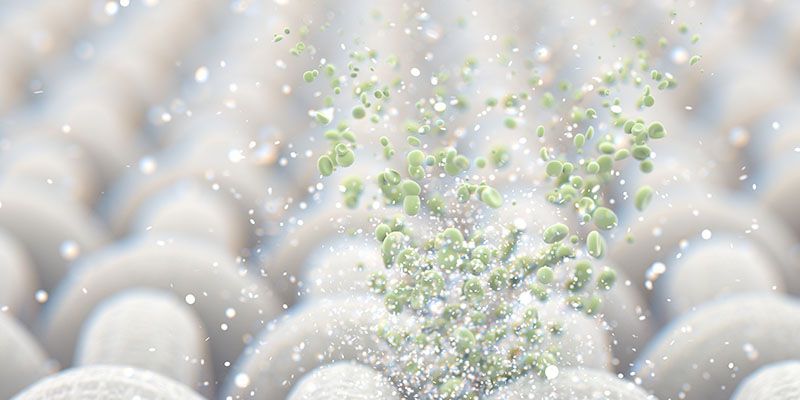Research strengths

Nationally and internationally colour, fashion and textile industries face major opportunities and challenges that can only be unlocked by high-quality research and innovation.
Major drivers include the need for sustainable development and viable circular economies, the increasing impacts of global population growth, and an ageing population. Globally, countless consumer, healthcare and industrial products contain textile materials, or depend on colour to ensure their success.
LITAC’s research reflects the United Nations Development Plan’s Sustainable Development Goals in line with the University’s own Sustainability Strategy.
LITAC creates new understanding and develops technology-driven solutions, working directly with end-users and harnessing multi-disciplinary academic research expertise from across the University. LITAC’s core research expertise includes textile technology, textile and fashion design, polymer science, and colour science and technology. Activities are supported by some of the most extensively equipped research facilities in the world, benefitting from a further ~£9M of additional investment in recent years.
Textile technology

The group’s research focuses on technical developments in the manufacturing, performance and characterisation of fibres, yarns and fabrics, including knitted, woven and nonwoven structures, as well as the modification of textile materials through deployment of innovative textile chemistry. Innovative recycling and reuse technologies are also being explored as part of efforts to implement viable circular economies. Textile technology research is key to both developing the next generation of sustainable textile products, that minimise impacts from cradle-to-grave, as well to the performance of a multitude of healthcare, consumer and industrial products containing textiles, on which society depends.
Projects in textile technology address the science and engineering of clothing and technical textiles, with a view to improving product performance and reducing environmental impacts. Clothing-related research includes developing textile materials designed to stop fibrous microplastic release at source and exploring innovative laundry treatments to promote fabric longevity. Research in technical textiles is a broad field, covering applications as diverse as, medical devices for healthcare, filter media and composites. Developing underpinning structure-property relationships and balancing complex property requirements in the development of innovative textile materials are key areas of activity.
Research in textile technology research is supported by extensively equipped laboratories for experimental work on fibre extrusion, yarn spinning, weaving, knitting and nonwoven fabric manufacturing, as well as dyeing and finishing. Extensive analytical, testing and characterisation facilities are also available on site, enabling textile materials and their properties to be comprehensively studied and quantified. These resources are further strengthened by extensively equipped specialist facilities such as:
- 3D Weaving Innovation Centre
- Clothworkers’ Centre for Textile Materials Innovation for Healthcare
- Future Fashion Factory (FFF)
The research has led to numerous innovative commercial products, as well as the launch of successful University of Leeds spinout companies that specialise in the areas of: nonwovens, low water conserving textile processes, and extraction of plant-based chemistry for multiple consumer products.
Polymer science
Research in polymer chemistry covers the design, synthesis and characterisation of monomers and macromolecules, in order to generate functional polymers and polymer-containing materials on the basis of targeted applicability and application. Particular interests are in the design and development of novel monomers for use in controlled polymerisation reactions to yield highly multifunctional polymers, novel photocatalytic materials, renewable fibre forming polymer materials, biodegradable materials, fibres made from recycled materials, multifunctional fibres, flame retardant materials for extreme environments and polymeric membranes.
There is also significant work in the areas of:
- Biomaterials: synthesis of multifunctional hydrogels and fibres, filament-based soft robotics, diagnostic and theranostic polymer materials with tunable properties for applications in woundcare, regenerative medicine and other medical devices.
- Surface coatings: polymer synthesis and conversion, rheological properties, migration phenomena, ageing effects, controlled delivery, appropriate mechanical and dynamic priorities, and end of life strategies (waste handling).
- Printed electronics: design and synthesis of high-performance semi-conductor molecules, formulation of conductive and dielectric inks, development of point-of-care medical diagnostic sensors, development of ultrathin and high-performance lithium-ion batteries.
Textile and fashion design

The group researches multiple aspects of the textile and fashion sector, from fashion products to packaging, branding and communications. This includes work in areas that influence sustainability, end-to-end across the sector, including fashion and textile design, technical design, pattern cutting, garment production, design production management, accessories, illustration, fashion and textile merchandising, marketing, journalism, photography, styling, image consultation, trend analysis, historical dress and textiles, fashion and textile archives. The main aim is to promote and provide expert knowledge through research enquiry into all design areas of fashion and textiles with particular specialisms in garment technology, sustainability, fashion history, culture and ethics.
Recent research activities include, understanding and addressing modern slavery in the fashion and textile industry, encouraging public engagement with textile waste management and developing high quality digital communication tools, including creating virtual 3D garment draping as a service. The Group’s research is supported by unique resources, such as:
- Yorkshire Fashion Archive, a collection of haute couture, fashion garments and everyday clothing and accessories, representing over a 100-year period.
- International Textile Collection (formerly Ulita), a worldwide collection of textiles, including Chinese Qing dynasty embroideries, Kashmiri shawls, Mediterranean and near eastern embroideries, block-printed cottons from Pakistan, Javanese batiks and ikats, Japanese textiles, West African weaves, 19th and 20th century European textile samples, natural and man-made fibres and glass plate teaching slides.
- M&S Company Archive, a collection containing over 71,000 items, dating from 1884 to the present day, comprising of garments and artefacts, written, photographic and digital records of the Company’s development.
- Future Fashion Factory (FFF), a £5.4M collaborative research programme, supported by the UK government’s industry strategy fund that is developing new technology, products and services, in collaboration with a collaborative network of over 2500 organisations.
Colour chemistry

Our research group activities in colour chemistry focus on the design, synthesis, evaluation of novel colorants and their applications across important, wide ranging scientific and technological fields. This includes development of green chemistry for application onto textiles and other fibrous materials, novel photochromic and thermochromic molecules for anti-counterfeit applications, novel dyes for the environmentally friendly coloration of textile fabrics, biological colorants and their applications in photo-medical treatments, functional organic dyes and their use in nano-technological products.
Research also includes development of novel chemistry for textile coloration and finishing, that helps to improve efficiency of processes and create novel effects finished fabrics. This work involves the development of alternative dyeing and finishing processes, dyeing and finishing of environmentally sustainable fibres, dyeing of textiles with natural dyes, fibre surface functionalisation, stain-resistant and other functional finishes, as well as ink formulation for digital printing and smart textiles.
Colour technology
The Colour Technology group focuses on the imaging, measurement and appearance of colour for design and manufacturing applications. Areas of research include:
- Machine learning to generate insights from data to allow more efficient colour design and decision-making processes.
- Understanding how consumers aesthetically evaluate interior design, with the aim of personalising internet content for consumers.
- Development of methods to measure the colour appearance of hair, teeth and skin.
- Working with designers to achieve inclusive designs that are accessible to consumers who are colour blind or who have low vision.
- Application of experimental methods to predict visual appearance attributes from physical measurements of materials.
- Understanding and quantifying the effect of light on human behaviour, performance and well-being, in real and virtual environments.
A substantial proportion of the research is conducted with, and funded by, industrial partners such as Samsung, LG, Unilever, Colgate and AkzoNobel. We also contribute to policy and international standards published by the International Commission on Illumination (CIE) and the International Organization for Standardization (ISO). We have successfully helped to create commercial products such as a novel imaging system for measuring and controlling colour in food and related industries including DigiEye, commercialised by Verivide Ltd with whom we have a strategic research partnership.
Our funding
LITAC has a number of funding mechanisms to support University of Leeds researchers and PhD students. Our project funding is to specifically develop innovative ideas with a high potential to generate Intellectual Property (IP) and opportunities for commercialisation. Our projects outputs are focused on:
- Innovative new technology, materials, processes
- Manufacturing methods
- Digital tools
- Prototype products.
If you are a University of Leeds researcher and you would like to find out more please email the Leeds Institute of Textiles and Colour at litac@leeds.ac.uk.